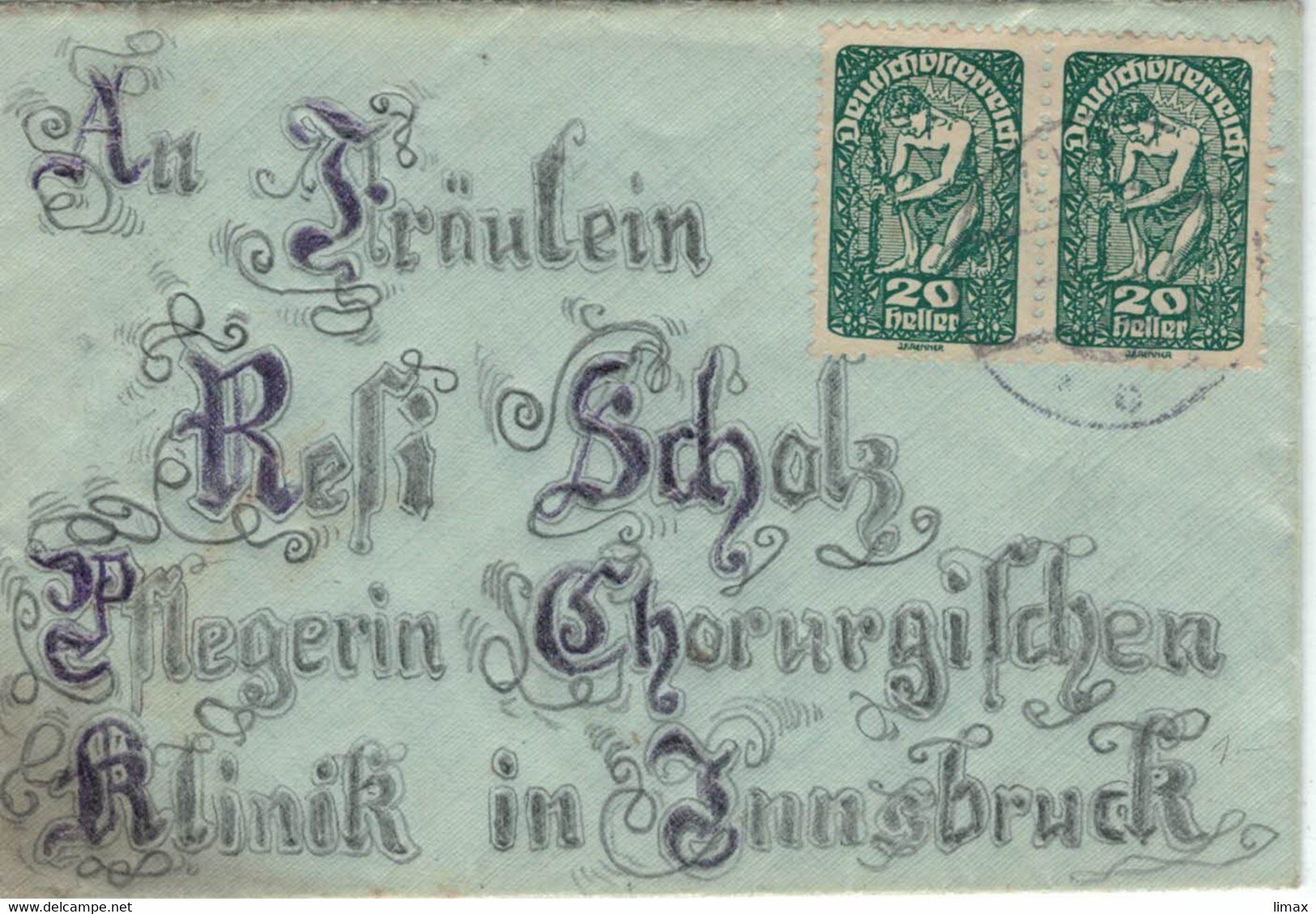
Today a philatelically not particularly valuable envelope, poor stamp quality, stamps not particularly valuable and on top of that the postmark is illegible, so nothing is known about place of dispatch. So why then cover of the month – simply because it is beautiful. Who still “draws” the address so beautifully on a letter today? This alone must have taken a long time. I would be very interested to know if the letter was also written in such a squiggly way, and also contained spelling mistakes, like the address (Chorurgische Klinik should probably be called Chirurgische Klinik). Either way, I am sure that the Pfelgerin Resi Scholz in Innsbruck was happy about this letter!
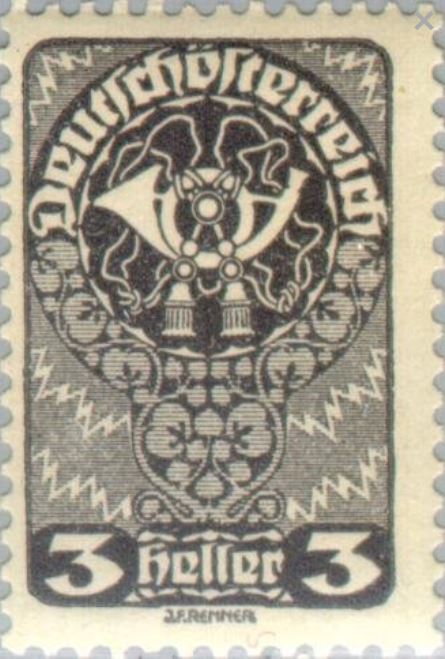
Posthorn
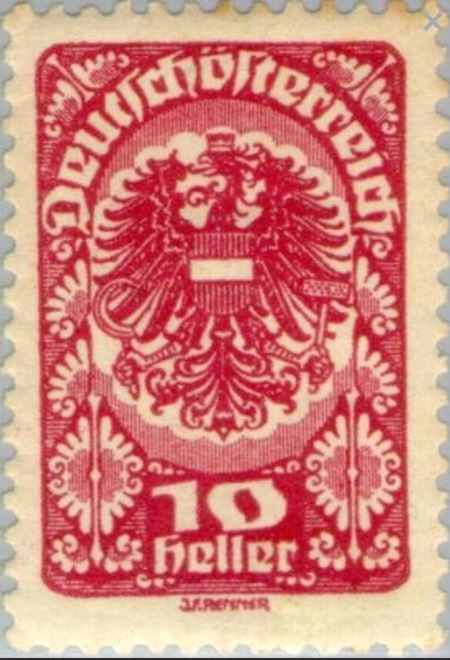
Eagel
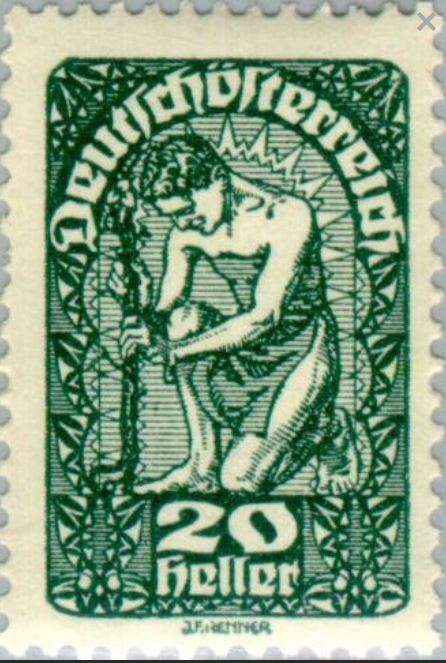
Allegorie
But why stamps with the designation German Austria? Did this state even exist? Yes! After the dissolution of the Austrian multi-ethnic state in 1918, a democratic state called the Republic of German Austria was created from a large part of the German-speaking territories of the former empire. However, at the time of its foundation, the calculation was made without the victorious powers. In the Treaty of Saint-Germain in the fall of 1919, the Austrians had to agree that their state name was now the Republic of Austria, which, contrary to their wishes, had full sovereignty over the German Republic and was not a legal successor to imperial Austria. This treaty also ultimately defined the borders of what is now Austria, including the separation from what is now South Tyrol.
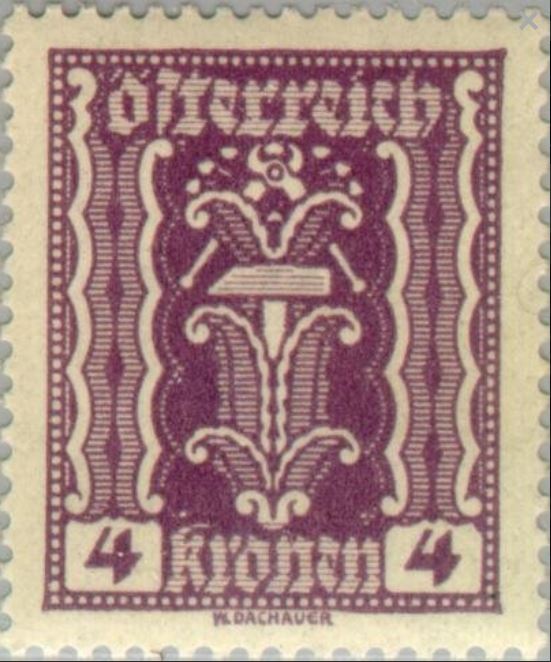
Corn 1922 – Austria
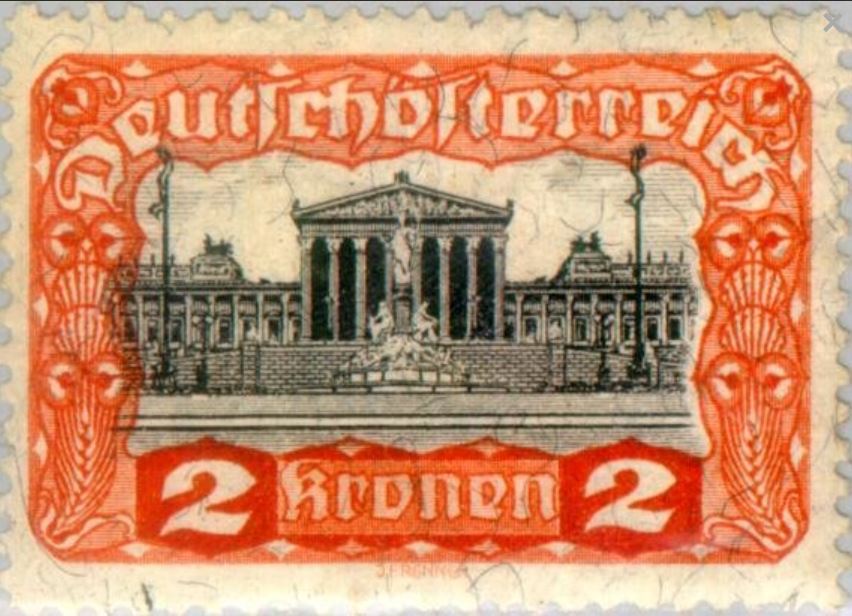
Parliament in Vienna
And if someone still wants to know something about the “German Austrian” stamps: The stamp series German Austria existed from 1919 to 1924. 1919 still on the stamps of the k.u.k. Monarchy a stamp overprint “Deutschösterreich” was used. Then, from 1920/21, the stamps with the inscription “Deutschösterreich”, mainly designed by J.F. Renner, were used. The motifs of the stamps were the Austrian eagle, the post horn, a kneeling man, and the parliament building of Vienna. They featured a high variation of colors and perforations, were also printed on different paper. After the Republic of German Austria failed, the next stamps were issued in 1922 with the imprint Austria.
